Contemporary artist Soghra Khurasani takes you on a quick journey through her art, which is a laborious and slow process.
I work in several forms of printmaking as well as new media, through which I explore and express the ideas of beauty and violence. The subject matter and political nature of my work is influenced by my own personal experiences around gender, aesthetics, and the role of women.
Featured image: Cratered Fiction. First Floor. Image courtesy TARQ.
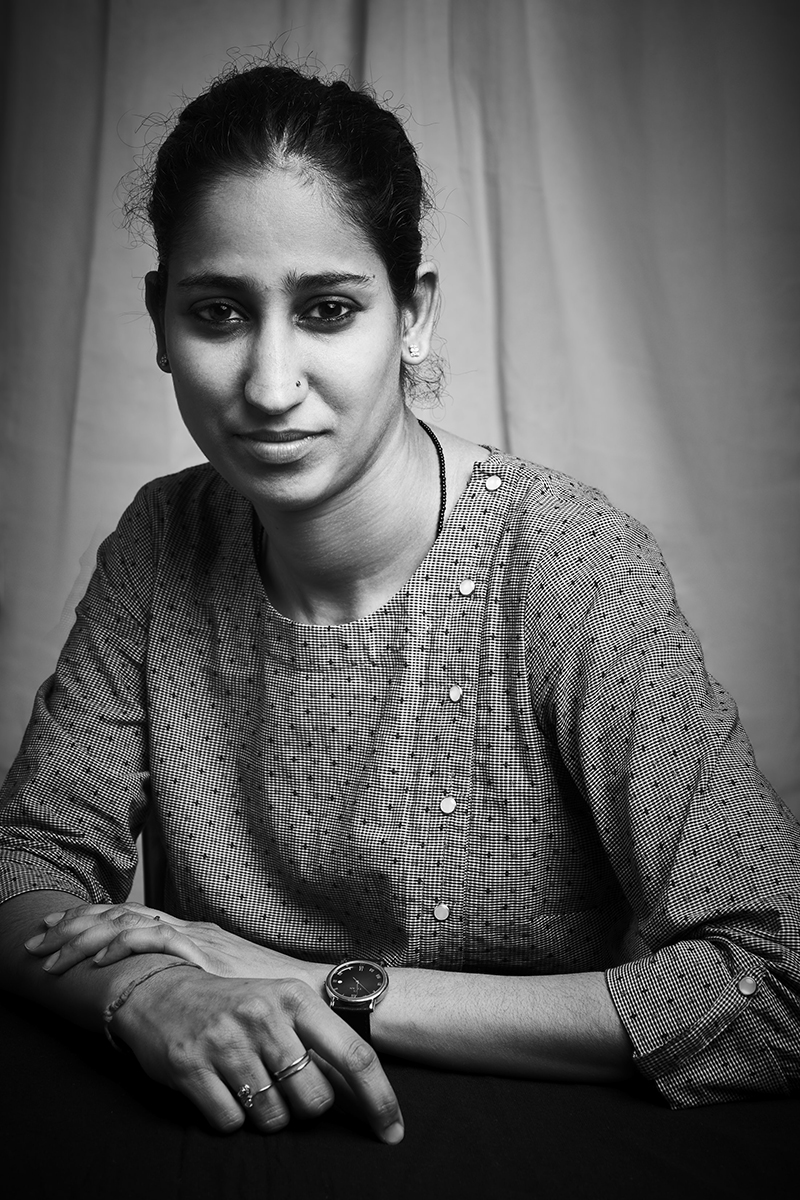
Soghra Khurasani. Picture courtesy TARQ.
Please tell us a little about yourself. What brought you to the world of art?
My childhood was rather diverse. I was more of a tomboy and would prefer playing on streets with the boys, skip homework and household chores, while my sister went for painting classes. I would often accompany her as a bodyguard but after a couple of months I gravitated to art and creativity. Few years later, I was admitted into the fine arts faculty for my bachelors at Andhra University, Vishakhapatnam, and soon after pursued my post graduate degree in print-making from M.S.U, Baroda. I have been a practicing print- maker ever since.
What is the primary role of an artist? How do you describe yourself in the context of challenging people’s perspectives via your work and art?
I think artists’ play a very important role in society because we don’t only work for ourselves but point our viewers towards important and relevant issues. We cannot change each and every person’s thoughts, but we can raise our voices and create awareness that may directly or indirectly connect to the viewer.

Installation view. Cratered Fiction. Picture courtesy TARQ.
How do you deal with the conceptual difficulty and uncertainty of creating work?
My work is mostly based on social and political issues, and the medium of woodcut prints gives me more freedom to express myself; it’s a long process where one work takes an entire month to complete. It’s a big challenge for me to carve the woodblock and transfer the image on paper manually. Most of my woodcut works are in a large format, and this medium helps me in producing the size as per requirements as compared to other printmaking mediums.
Is there any topic lately that you would like to be mentored on?
I would prefer working on broader issues of society and I would like to connect my work with history in the coming years.
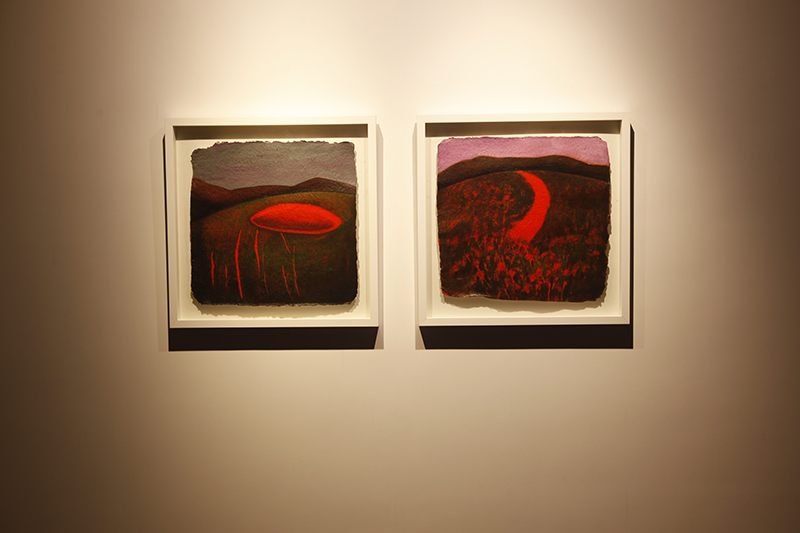
Installation image. Cratered Fiction. Picture courtesy TARQ.
What would you call your style?
I work in several forms of printmaking as well as new media, through which I explore and express the ideas of beauty and violence. The subject matter and political nature of my work is influenced by my own personal experiences around gender, aesthetics, and the role of women. Personally, landscapes play a major part in my works as those are the places where we get inspired and are free to wander.
Let’s talk about the evolution of your practice over the years. Tell us about your commitment to your current medium.
My print works include the use of the woodcut, etching and digital techniques. I have been working with these mediums for nearly a decade and I have the temperament to handle the tools and its hard matrix. Text in digital and videos helps me minimise my ideas and sometimes allow me to think out of the box.
After my masters, it was not easy to continue as a freelance artist. I faced some struggle during my early years but never stopped my work. I would always save one edition of my work so that I could show all works together whenever I had my solo show. In 2014, TARQ gave me that opportunity to showcase my old and new work together, that’s when One day it will come out happened.
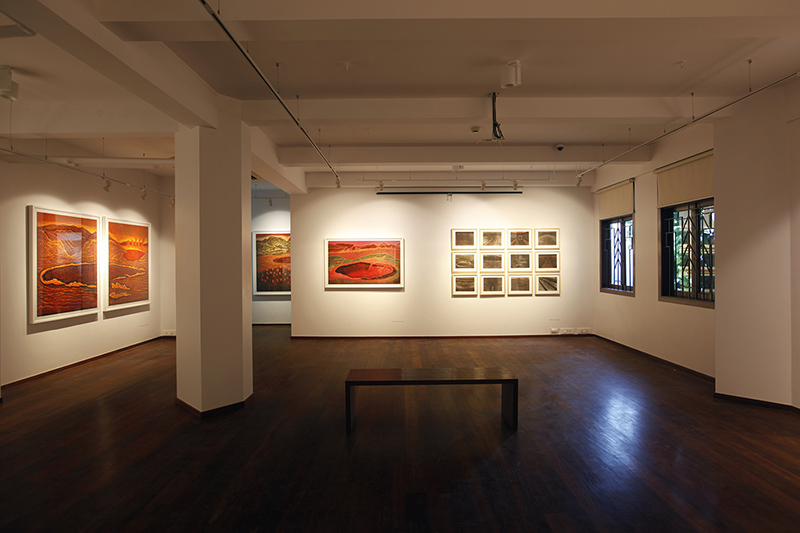
Installation view. Cratered Fiction. Picture courtesy TARQ.
How does your audience react to your work?
Most people are not familiar with the printmaking medium. Hence, in solo exhibitions, I prefer to show prints along with the woodblocks to help the audience understand the process better. I find that the audience really enjoys and appreciates the work upon understanding the process.
What was your first sale? Do you handle the commercials yourself or is it outsourced to a gallery or an agent?
I used to earn at a very early age doing realistic portraits, before joining my bachelor’s programme. However, my real first sale was during the final year display during my master’s. The buyer not only purchased my work, but also sponsored my practice for six months after I graduated. Today, all my sales are handled by TARQ.
Think of the biggest professional risk you have taken. What helped you take that risk?
While most people settle down and buy a house, I took a risk along with Shaikh Azghar Ali, my husband, who is also an artist, and built a large studio space outside Baroda. This space not only helps our professional growth but is also a space for residencies, bringing together artists from various parts of the world to create and work together.
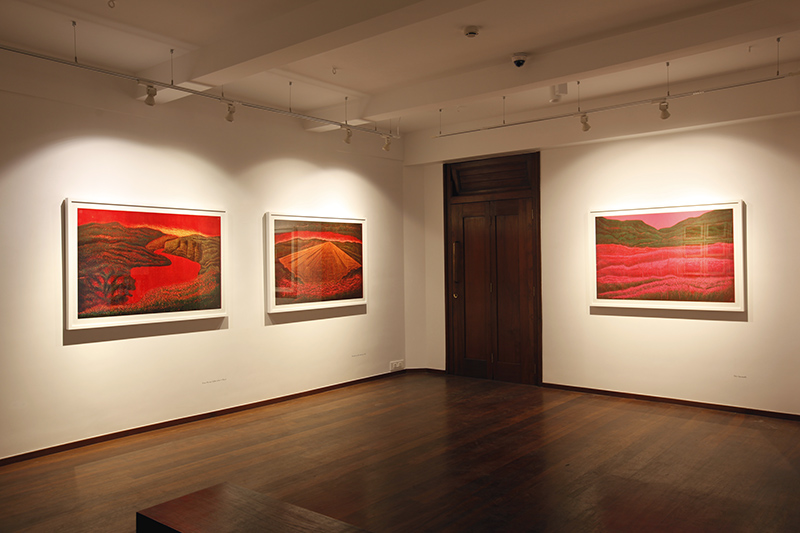
Installation view. Cratered Fiction. Picture courtesy TARQ.
What is the best piece of advice you have received? Why was it helpful?
I have received a lot of advice with regard to my practice. Most of it has been positive and helped me move forward. I think the immense encouragement I received from many people to continue working in printmaking has been very helpful.
Tell us about your studio, what kind of place is it? Could you describe your usual work day in the studio?
I work from two studio spaces – one is in my home in the city and the other is my print studio located on the outskirts of the city. I spend most weekends outside the city, where I try to take prints, work in my garden and spend time with nature.
How does your interaction with a curator, gallery or client evolve?
My interaction with a curator, gallery or client grows over a period of time. They are important relationships, not only for me but also showcasing my works.
Let’s talk about your frameworks, references and process. What inspires you?
I was and continue to be inspired at various stages of my life. During my education, I was very keen on readings about art history, particularly the Renaissance period and Impressionist paintings. Later, my focus shifted to new media art. I have a long list of artists who inspire me, spanning different topics and ideologies.

Installation view. Cratered Fiction. Picture courtesy TARQ.
Are you more of a studio artist or naturally collaborative by nature? How do you feel about commissions?
I am more of a studio artist, wherein my thought process, imagery and memory aid me in composing my works. Sometimes I directly draw sketches and forms from nature. I never done any commission but in future, if I feel I have a knack for it, I will surely try it out.
What are you working on now? What’s coming next season?
I will be doing a solo exhibition in 2021 with TARQ. I’ll focus on some new areas and materials. It will talk more about forms, important topics and voices that are meant to be heard. I am excited to see what comes out of it.
Before you go – you might like to browse our Artist Interviews. Interviews of artists and outliers on how to be an artist. Contemporary artists on the source of their creative inspiration.








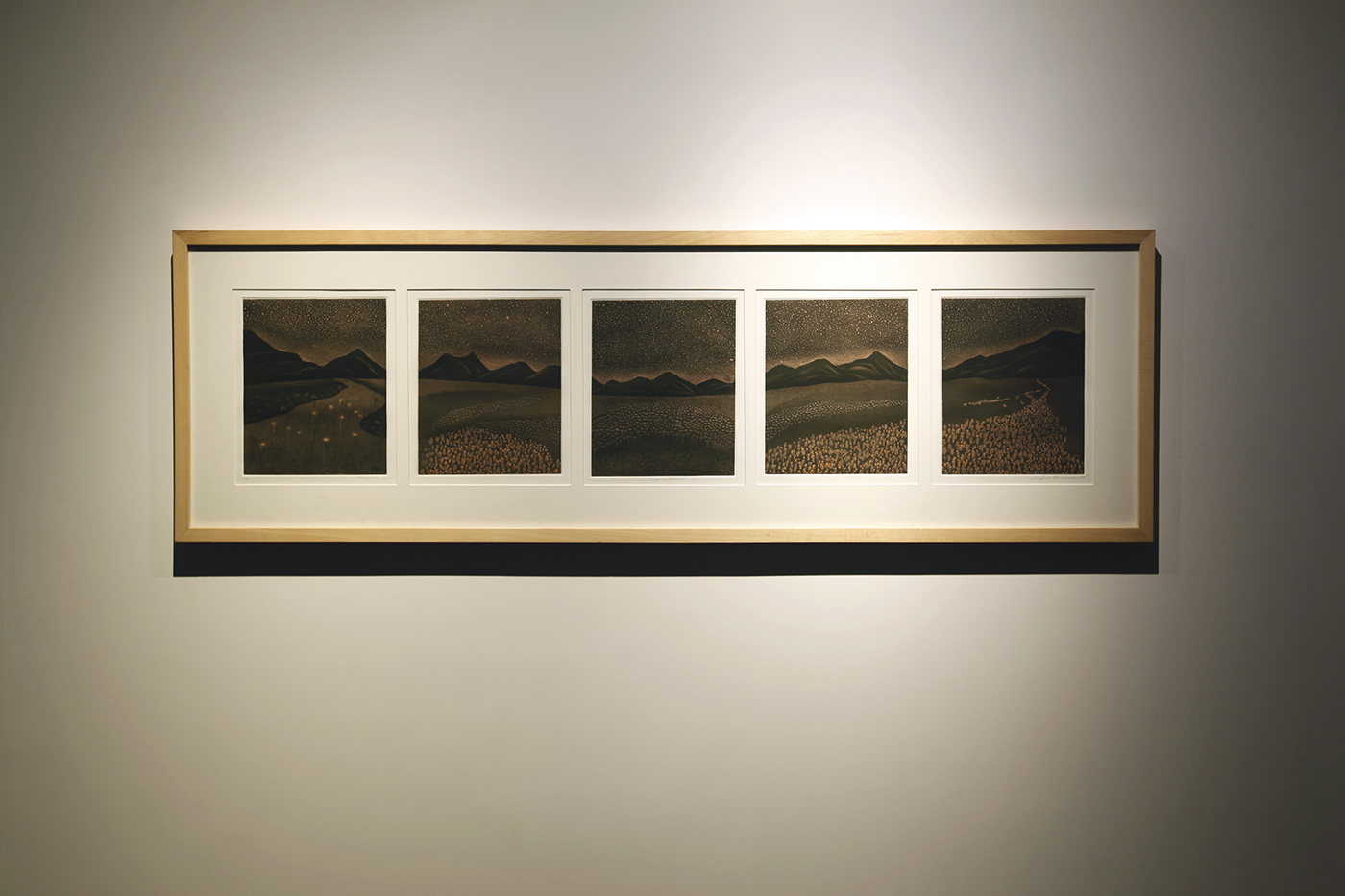



Add Comment